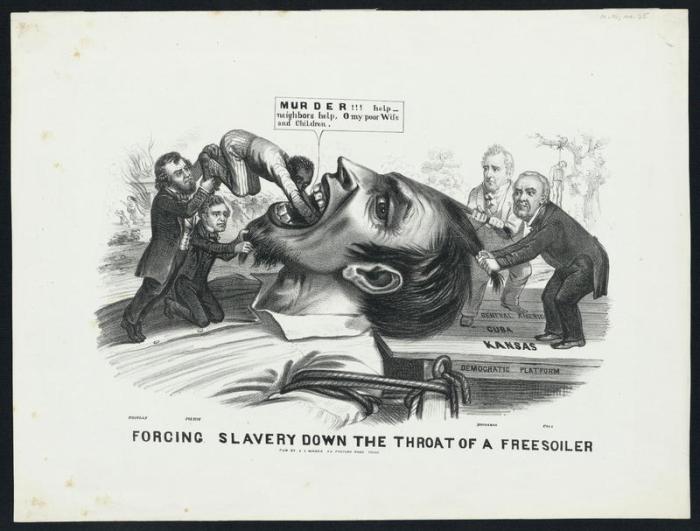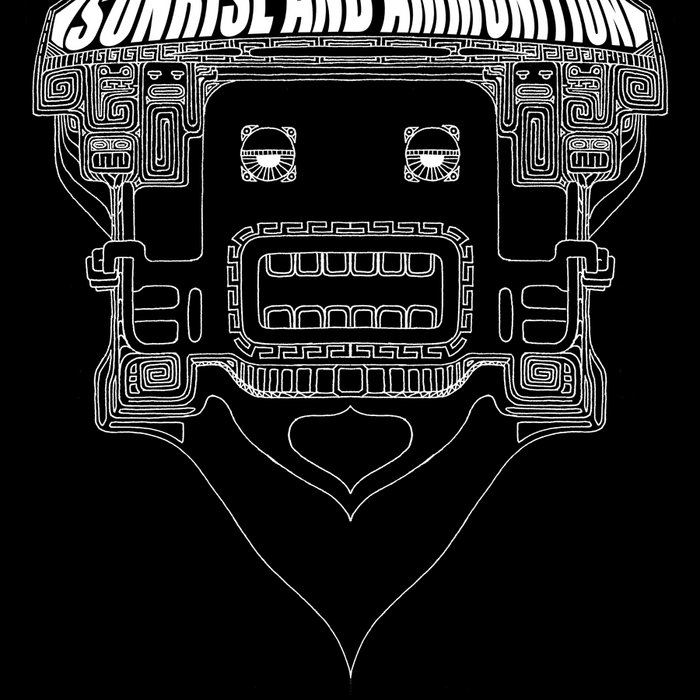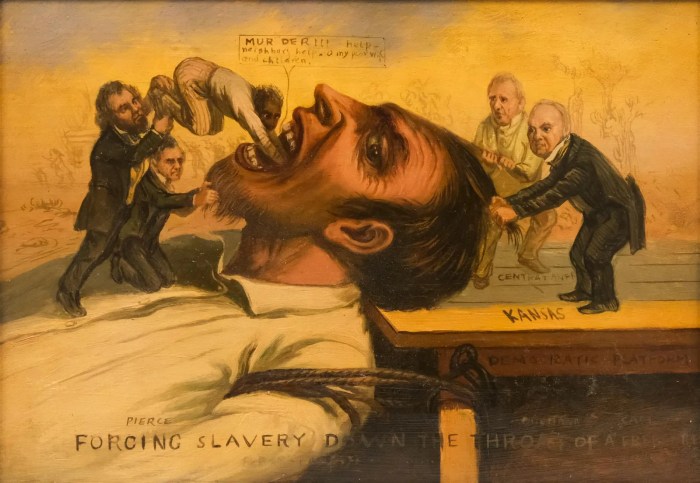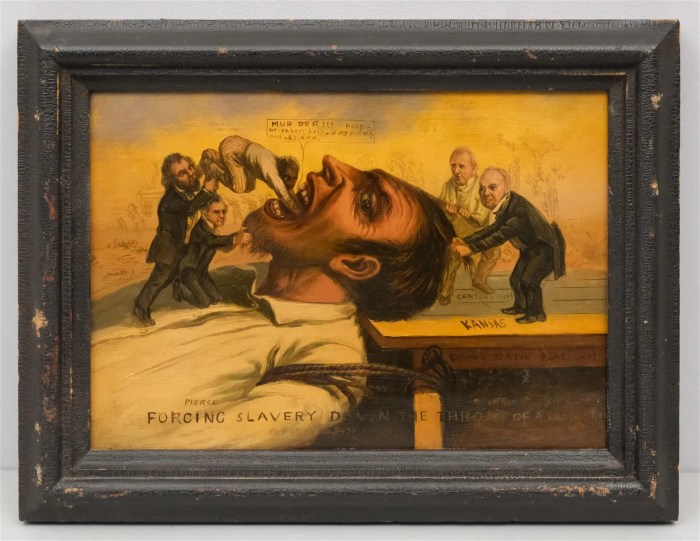Forcing slavery down the throat of a freesoiler symbolism sets the stage for this enthralling narrative, offering readers a glimpse into a story that is rich in detail and brimming with originality from the outset. This phrase, laden with historical significance, serves as the cornerstone of this exploration, promising an in-depth examination of its meaning, implications, and enduring legacy.
The phrase “forcing slavery down the throat of a freesoiler” evokes a vivid image of the struggle between abolitionists and pro-slavery forces in the antebellum United States. It captures the desperation and determination of those who fought to end the abhorrent institution of slavery, as well as the resistance they faced from those who sought to preserve it.
Symbolism of “Forcing Slavery Down the Throat of a Freesoiler”

The phrase “forcing slavery down the throat of a freesoiler” symbolizes the imposition of slavery upon those who opposed its expansion. It captures the struggle between pro-slavery and anti-slavery forces in the United States, particularly in the lead-up to the Civil War.
The term “freesoiler” refers to individuals who advocated for the exclusion of slavery from territories acquired by the United States. The imagery of “forcing slavery down the throat” conveys the idea of a violent and coercive act, highlighting the aggressive nature of pro-slavery efforts to maintain and expand the institution.
This phrase reflects the deep-seated conflict between the two sides, with the anti-slavery movement viewing slavery as a moral abomination and a threat to freedom and equality. The pro-slavery forces, on the other hand, saw slavery as a necessary institution for maintaining economic and social order.
Literary and Artistic Representations, Forcing slavery down the throat of a freesoiler symbolism
The phrase “forcing slavery down the throat of a freesoiler” has found its way into various literary and artistic works, serving as a powerful metaphor for the horrors of slavery and the struggle for freedom.
- Uncle Tom’s Cabin by Harriet Beecher Stowe:The novel depicts the brutality of slavery and the dehumanizing treatment of enslaved people, capturing the sentiment of “forcing slavery down the throat” through its vivid descriptions of violence and oppression.
- “I Have a Dream” speech by Martin Luther King Jr.:King’s iconic speech uses the imagery of “forcing slavery down the throat” to symbolize the ongoing struggle for civil rights and racial equality in the United States.
- The painting “The Scourged Back” by Winslow Homer:This artwork portrays the whipped back of an enslaved man, evoking the physical and emotional violence inherent in the institution of slavery, a stark reminder of the phrase “forcing slavery down the throat.”
Political and Social Commentary
The phrase “forcing slavery down the throat of a freesoiler” has been employed in political speeches, debates, and social movements to shape public opinion and influence policy.
- Abolitionist Movement:The phrase became a rallying cry for abolitionists, who used it to denounce the expansion of slavery and demand its immediate end.
- Civil Rights Movement:During the Civil Rights Movement, the phrase was used to highlight the ongoing legacy of slavery and the continued struggle for racial justice.
- Contemporary Activism:In recent years, the phrase has been revived by activists fighting against modern forms of oppression and inequality, drawing parallels to the historical struggle against slavery.
Historical Legacy and Impact
The phrase “forcing slavery down the throat of a freesoiler” has had a profound impact on public discourse and historical narratives.
- Civil War:The phrase played a significant role in the lead-up to the Civil War, helping to galvanize support for the anti-slavery cause.
- Reconstruction Era:After the war, the phrase was used to justify policies aimed at protecting the rights of freed slaves and preventing the resurgence of slavery.
- Contemporary Discussions:Today, the phrase continues to be relevant in discussions about the legacy of slavery, racial inequality, and the ongoing struggle for social justice.
FAQ Guide: Forcing Slavery Down The Throat Of A Freesoiler Symbolism
What is the historical context of the phrase “forcing slavery down the throat of a freesoiler”?
The phrase emerged in the mid-19th century during the heated debates over slavery in the United States. Freesoilers were political activists who opposed the expansion of slavery into new territories, and the phrase was used to describe the efforts of pro-slavery forces to force slavery upon those who resisted it.
How has the phrase been used in literature and art?
The phrase has been used in a variety of literary and artistic works to depict the struggle between abolitionists and pro-slavery forces. Examples include Harriet Beecher Stowe’s novel “Uncle Tom’s Cabin” and the painting “The Slave Market” by Jean-Baptiste Debret.
What is the ongoing relevance of the phrase in contemporary discussions about slavery and its legacy?
The phrase remains relevant today as a reminder of the deep divisions that existed over slavery in the United States and the ongoing need to confront its impact on American society. It is used by scholars, activists, and policymakers to highlight the continuing legacy of slavery and the importance of addressing its effects.


